Special Report
20 Companies Profiting the Most From War

Published:
Last Updated:

National security and warfare are big business. The U.S. government spent $598.5 billion, over half of its discretionary budget, on military and weapons technology in 2015. The 100 largest arms-producing and military services companies across the globe sold an estimated $370.7 billion worth of arms that year.
In its latest annual report, Top 100 Arms-Producing and Military Services Companies, the Stockholm International Peace Research Institute (SIPRI) estimated arms sales for companies around the world using financial documents and reports of sales to national ministries and departments of defense. 24/7 Wall St. reviewed the 20 companies with the largest arms sales in 2015.
[in-text-ad]
U.S.-based companies continue to dominate the defense market, a trend that is unlikely to change meaningfully any time soon. Virginia-based Lockheed Martin’s arms sales totaled $36.44 billion in 2015, by far the most of any company. Booz Allen Hamilton rounds out the list of 20, with $3.9 billion in military-related sales that year. U.S.- and Western Europe-based companies account for 82.4% of arms sales by the 100 largest military procurement companies.
Click here to see the 20 companies profiting the most from war.
Aude Fleurant is programme director of the Arms and Military Expenditure Program at SIPRI. In an interview with 24/7 Wall St., she explained that because U.S.-based arms manufacturers are so numerous and account for such a large share of global defense spending, “what is happening in the U.S. will influence the [military procurement] trends as a whole, as a general rule.”
Because these companies — in many cases even foreign arms makers — sell primarily to the U.S. Department of Defense, sales patterns are closely linked to budgetary decisions in the U.S. The 2011 Budget Control Act, for example, resulted in a dip in global military spending.
According to Fleurant, shifting budget priorities, which often change dramatically after an election or economic event, add a level of uncertainty that is especially challenging for the defense industry. Not only are fighter jets, submarines, and highly destructive weapons available only to governments and armed forces, but also these defense products often require decades to design, assemble, and test.
The great length of procurement cycles, scale of product capabilities, limited access to defense markets, as well as the risk of sudden budgetary changes mean defense companies are under enormous pressure to find deals among the already very limited pool of customers. According to Fleurant, the level of uncertainty and these pressures are currently higher than usual. She highlighted relatively small export markets as major targets of companies looking to make up lower revenues.
According to a recent report by the Congressional Research Service, developing nations continue to be the main focus of arms sales. Countries without large arms industries rely heavily on exports from powerful nations, primarily the United States and Russia. From 2011 to 2014, the United States and Russia dominated the arms market in the developing world. Over that period, the United States made nearly $115 billion in such agreements, nearly half of the total value of military deals. Agreements with Russia totalled $41.7 billion.
To identify the companies profiting the most from war, 24/7 Wall St. reviewed data provided by the Stockholm International Peace Research Institute in its annual SIPRI Top 100, a review of the the largest arms-producing and military services companies by arms sales. Due to a lack of sufficient data, SIPRI excluded Chinese companies from the report. Employment data, profit figures, and arms sales as a percentage of total sales also came from the SIPRI report and are for the 2015 calendar year. Other company-specific data were obtained from annual financial reports.
These are the 20 companies profiting from war.

20. Booz Allen Hamilton
> Arms sales: $3.90 billion
> Total sales: $5.40 billion
> Profit: $294 million
> Employees: 22,600
Management, technology, consulting, and engineering company Booz Allen Hamilton has worked closely with U.S. defense agencies since WWII. It is one of the top military equipment contractors in the world. According to the company, $2.6 billion of its fiscal 2016 revenue came from defense clients, roughly half of total revenue. SIPRI pegs total arms sales from Booz Allen at $3.9 billion in 2015.
A significant portion of Booz Allen Hamilton’s military-related procurements is related to cybersecurity. Based on analysis from the company, cybersecurity threats will continue to increase in the United States and around the world.
[in-text-ad]
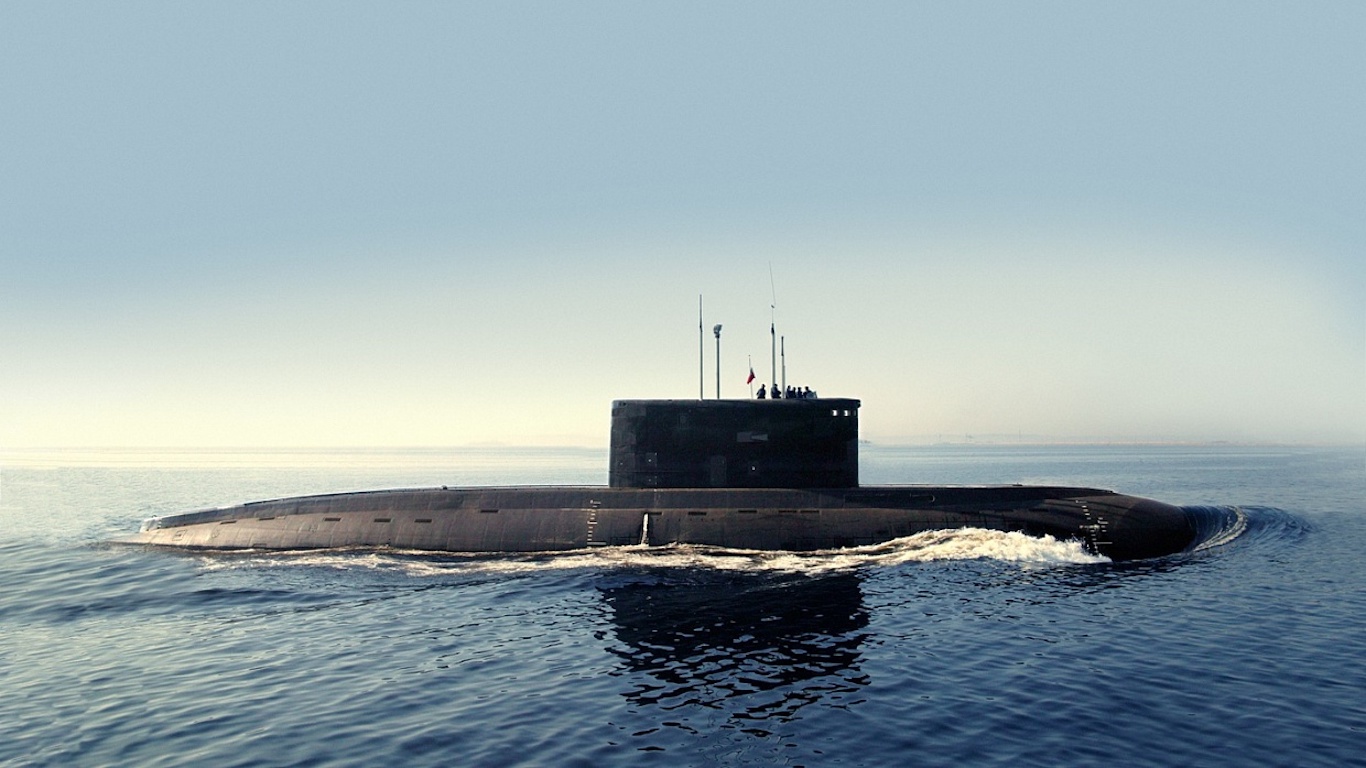
19. United Shipbuilding Corp.
> Arms sales: $4.51 billion
> Total sales: $5.20 billion
> Profit: $230 million
> Employees: 80,000+
United Shipbuilding Corp. is one of three Russian companies to report more than $4 billion in revenue from arms deals alone in 2015. Total weapons sales at the company, Russia’s largest shipbuilder, were up $159 million from 2014. The company manufactures more than two dozen different military submarines and warships for the Russian Navy and customers abroad, in addition to several vessels for commercial use.
The company was established in early 2007 in accordance with a decree issued by President Vladimir Putin.
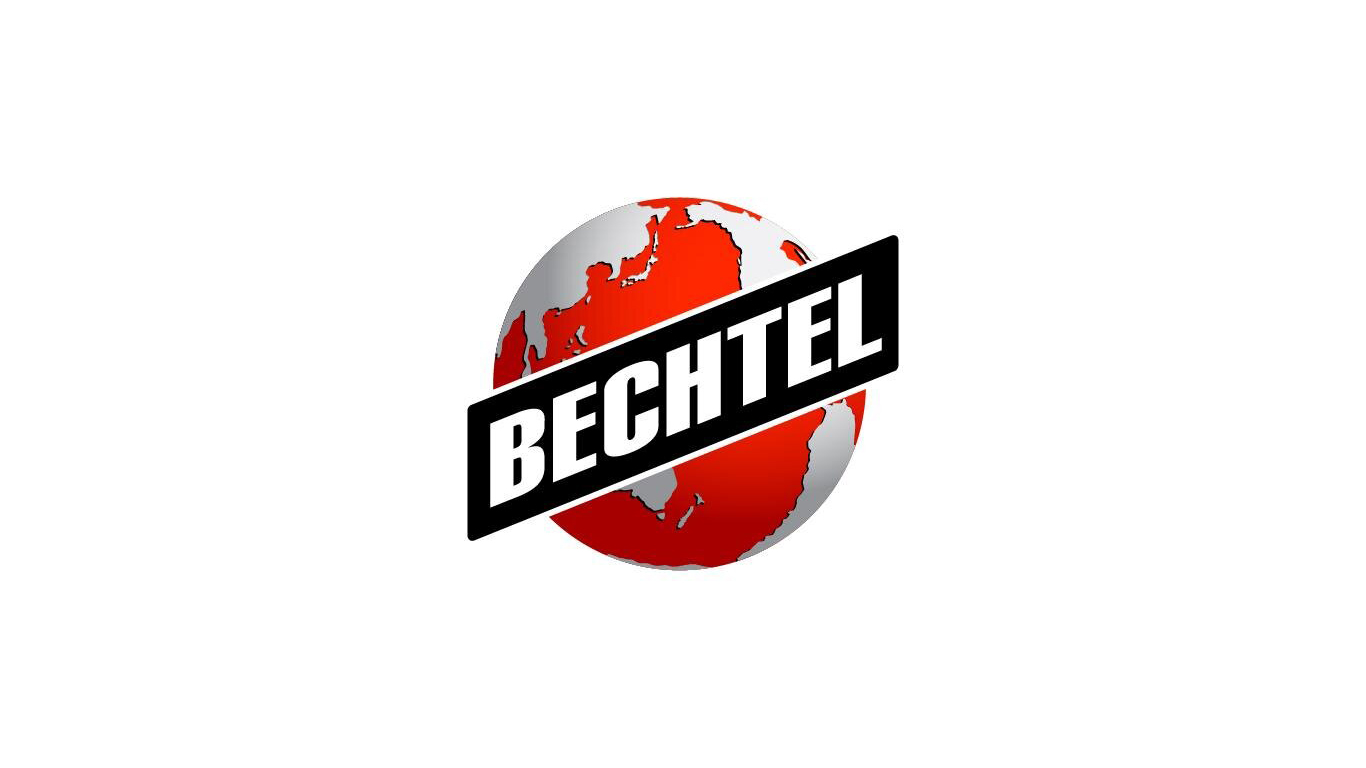
18. Bechtel Corp.
> Arms sales: $4.60 billion
> Total sales: $32.30 billion
> Profit: N/A
> Employees: 53,000
Bechtel is a private engineering firm that builds critical infrastructure, provides environmental cleanup and management services, operates dozens of mining operations, and serves as defense contractor in 160 countries. Defense contracts accounted for 14% of the company’s 2015 sales, a relatively low share compared with other major defense companies.
The company has contracts with both the U.S. Navy and Department of Defense, developing nuclear propulsion systems for submarines and aircraft carriers and disassembling retired chemical weapons.
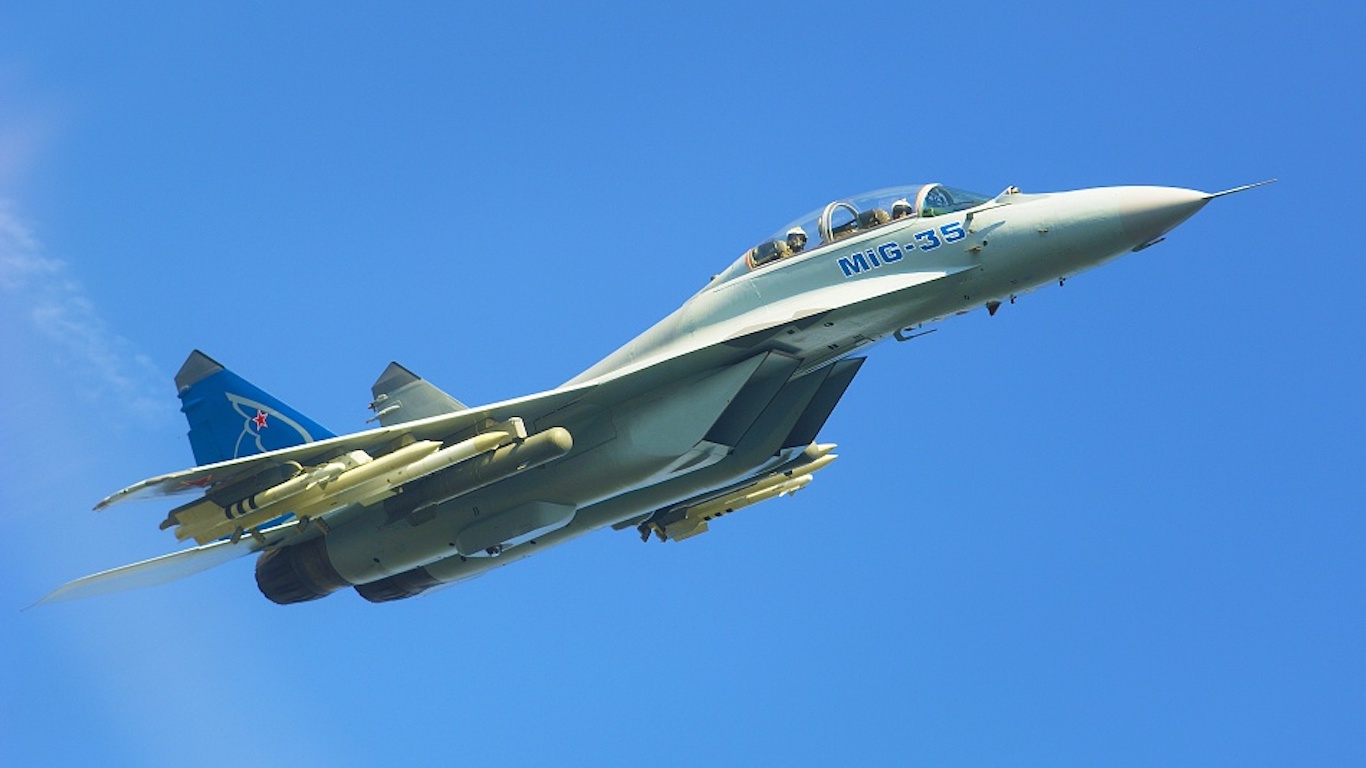
17. United Aircraft Corp.
> Arms sales: $4.61 billion
> Total sales: $5.77 billion
> Profit: -$1.79 billion
> Employees: N/A
United Aircraft Corp. is one of three Russian companies to report at least $4 billion in annual weapons sales. Despite lucrative military contracts, the company is in the red, posing a $1.79 billion loss in 2015. United Aircraft has lost money in each of the four prior years as well. The company attributed its losses to its emphasis on long-term investment and growth, and anticipates profitability by 2025.
United Aircraft manufactures a range of civil and transport aircraft. However, weapons and military aircraft, including the iconic MiG fighter jet, account for some 80% of the company’s sales.
[in-text-ad-2]

16. Rolls-Royce
> Arms sales: $4.79 billion
> Total sales: $20.40 billion
> Profit: $1.65 billion
> Employees: 50,500
The Rolls-Royce brand is typically associated with luxury automobile manufacturing. However, a significant portion of the company’s business is power systems development, ranging from nuclear propulsion for naval vessels to jet engines.
Rolls-Royce manufactures a dozen engines that power military helicopters and fighter jets, as well as the U.S. Air Force’s C-130 Hercules military transport aircraft. Defense contracts accounted for over one-fifth of the company’s total 2015 revenue. The London-based company is the second largest defense contractor in the U.K.
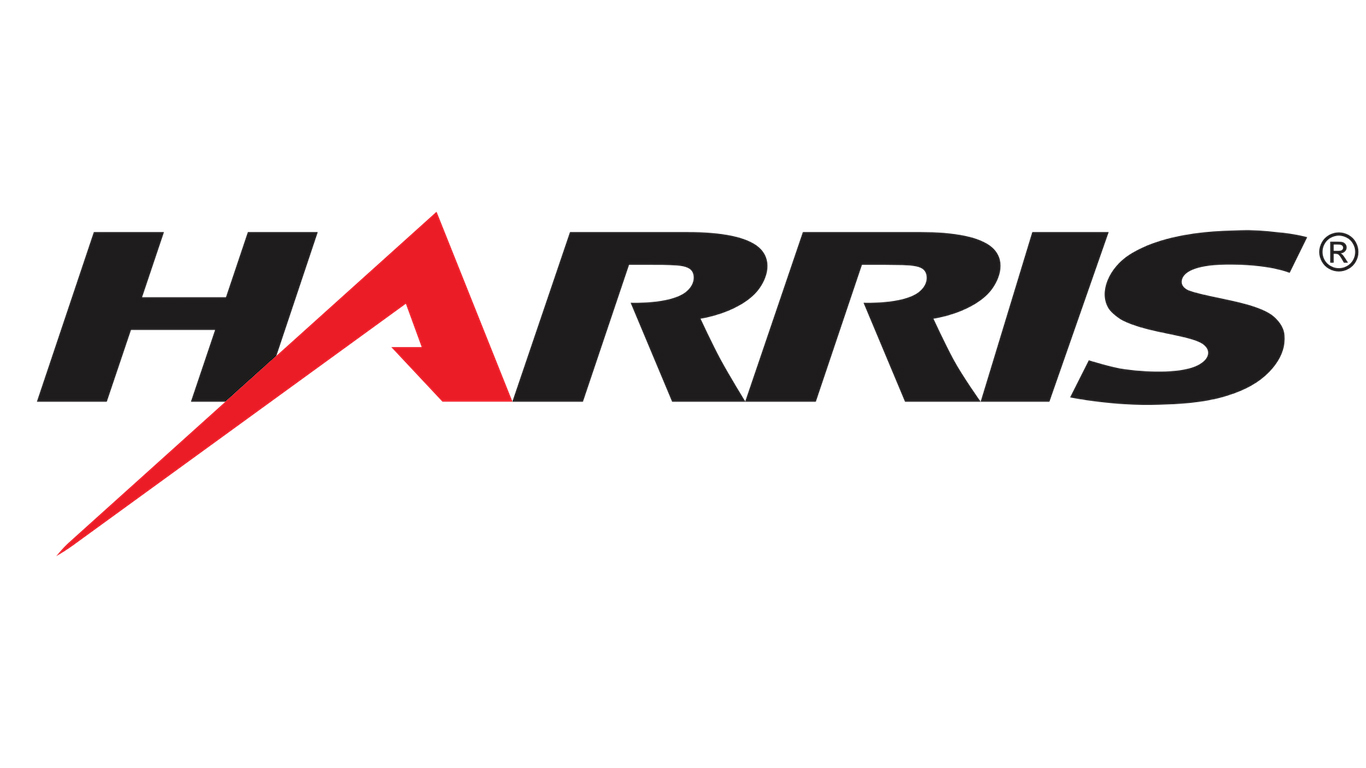
15. Harris Corp.
> Arms sales: $4.92 billion
> Total sales: $7.47 billion
> Profit: $324 million
> Employees: 21,000
Harris Corporation reported $4.92 billion in defense contracts in 2015, up from $3.11 billion the previous year. Responsible for the electronic components equipped in the F-22 and F-18 fighter jets, the company has several lucrative deals with the U.S. DoD. Harris has also worked in the increasingly relevant areas of electronic warfare and cyber security for decades.
Harris Corp. deals primarily with the U.S. government and no single foreign government accounted for more than 5% of the company’s total revenue last year. All told, defense contracts accounted for roughly a third of the company’s total sales in 2015.
[in-text-ad]
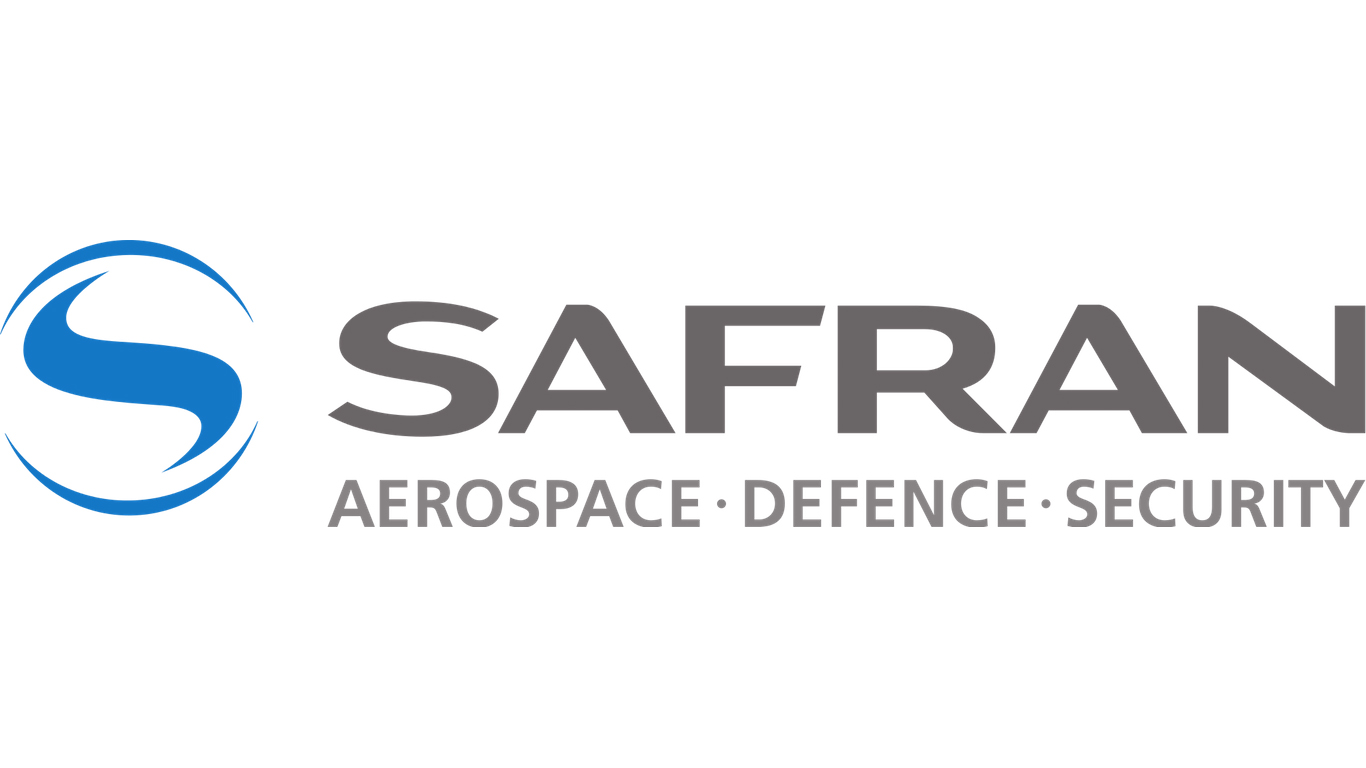
14. Safran
> Arms sales: $5.02 billion
> Total sales: $19.31 billion
> Profit: $1.64 billion
> Employees: 70,090
In the latest move towards industry consolidation, French aerospace manufacturer Safran agreed in January to buy fellow French arms maker Zodiac Aerospace. The merged companies form one of the world’s largest aerospace suppliers by revenue.
Safran makes one of the best selling jet engines, the CFM56, used mainly in Boeing and Airbus planes. The United States — the U.S. government and U.S. based companies — is by far the largest player in the global arms market. As it is therefore true for most military contractors, the U.S. is a major customer of Safran. Safran helicopter engines and other parts such as wheels and brakes are used by the Coast Guard and other branches of the military.
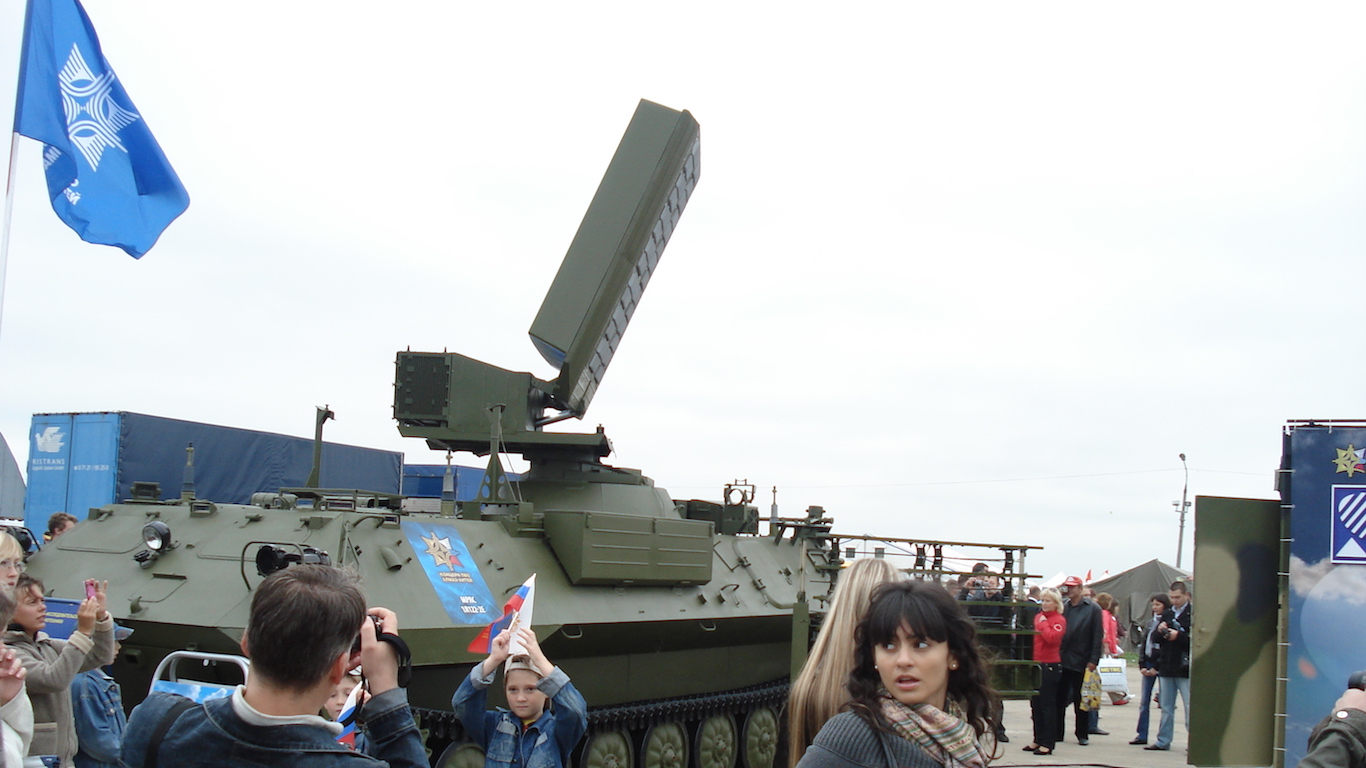
13. Almaz-Antey
> Arms sales: $6.62 billion
> Total sales: $6.97 billion
> Profit: N/A
> Employees: N/A
Russia’s national military expenditure dropped from third to fourth place in 2015, as Saudi Arabia moved up to third largest arms spender. More recently, despite tightening budgets from falling oil prices, Russia announced increased military spending in its 2017-2019 budget.
Despite the budget fluctuations, state-owned Almaz-Antey is one of several Russian defense companies to rank among the top global arms producers in recent years. Like most large defense contractors, the missile maker’s operations are heavily dependent on both government budgets and demand from governments in the region. India, which increased its military spending by 46% between 2006 and 2015, is one Almaz-Antey’s largest customers.
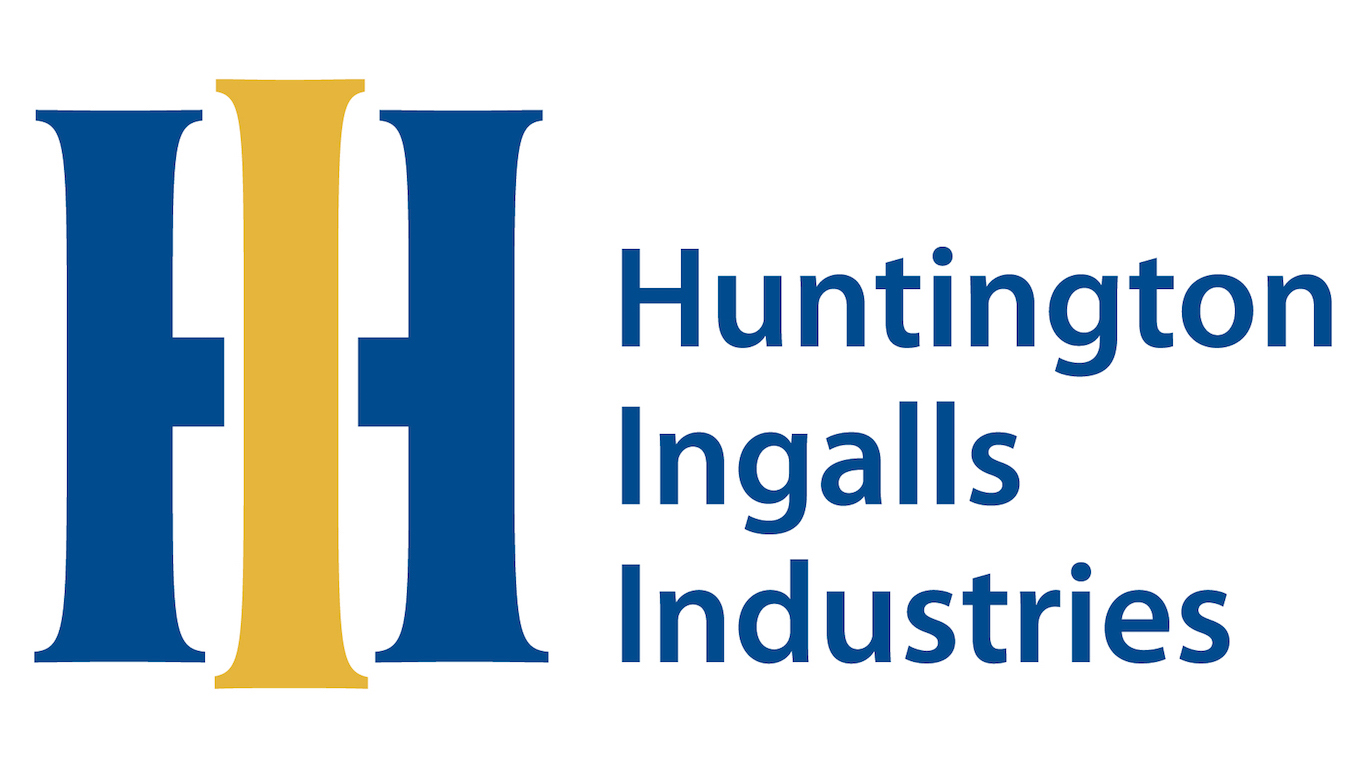
12. Huntington Ingalls Industries
> Arms sales: $6.74 billion
> Total sales: $7.02 billion
> Profit: $404 million
> Employees: 35,500
Though it is a private company, Huntington Ingalls Industries plays a crucial role in the U.S. defense and military strategy. The company is the sole manufacturer of aircraft carriers for the U.S. Navy and one of only two companies contracted to build nuclear-powered submarines. In addition to its headquarters, the company has manufacturing facilities in Newport News, Virginia. Huntington is one of the largest employers in Virginia and the largest shipbuilding company in the United States.
The company has a number of subsidiaries, including UniversalPegasus International, an oil and gas infrastructure project management company. Still, military contracts accounted for some 96% of the company’s 2015 sales.
[in-text-ad-2]
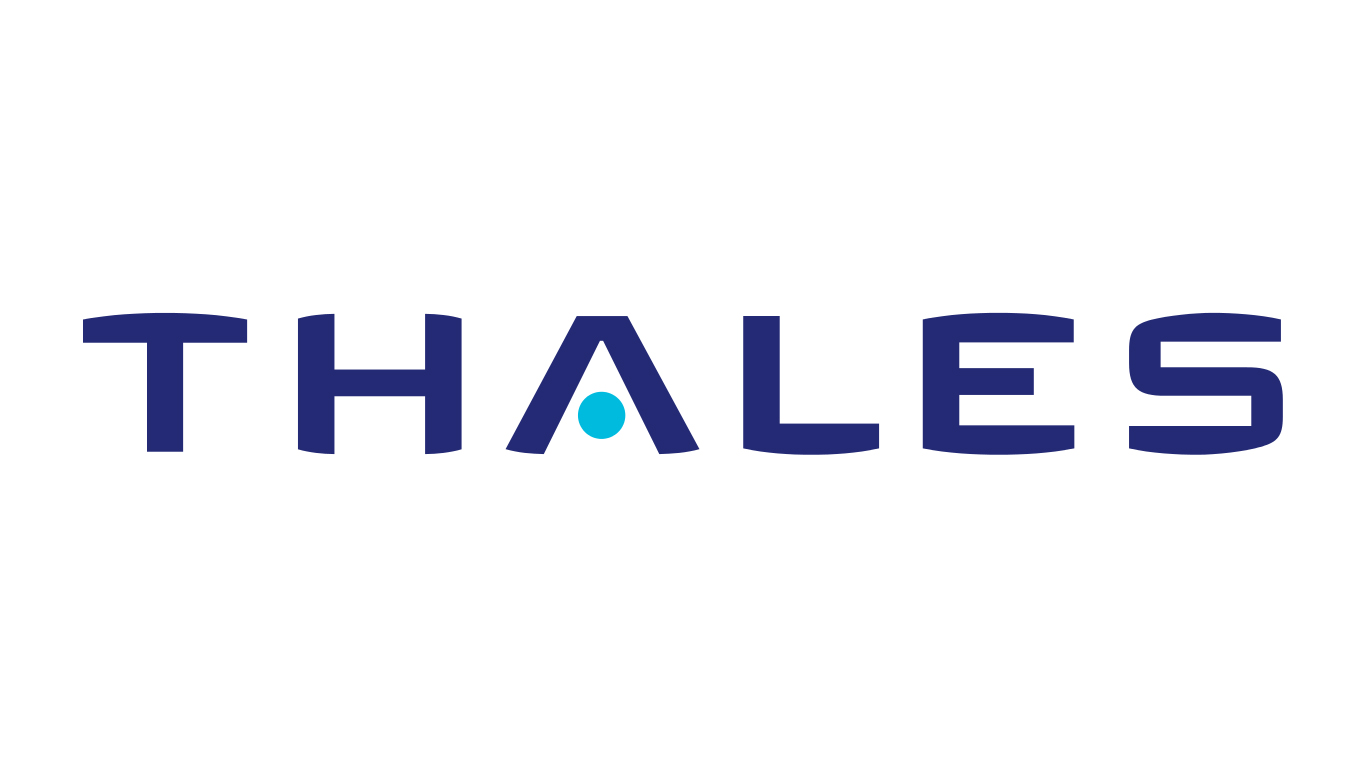
11. Thales
> Arms sales: $8.10 billion
> Total sales: $15.60 billion
> Profit: $897 million
> Employees: 62,190
Involved in ground transportation and communications, avionics, naval systems, and cybersecurity, Thales’ business encompasses nearly every aspect of military technology. The French company signed major defense contracts with Australia, Egypt, and Qatar in 2015, driving sales to $8.10 billion, up over $900 million from the year before.
Still, defense only accounts for about half of the Paris-based company’s business. Thales also designs and manufactures satellites and electronic aeronautic equipment for commercial and scientific use.

10. L3 Communications
> Arms sales: $8.77 billion
> Total sales: $10.47 billion
> Profit: $282 million
> Employees: 38,000
L3 Communication divides its business into three segments: electronic systems, aerospace systems, and communication systems. Though the company has private and commercial clients, including airports worldwide that use L3’s screening technology at security checkpoints, it is primarily a defense contractor.
Defense contracts accounted for some 84% of the company’s $10.47 billion in 2015 sales. Recently, the company won a contract with the U.S. Navy to manufacture power distribution and switchgear components for Virginia Class Submarines.
[in-text-ad]

9. Finmeccanica
> Arms sales: $9.30 billion
> Total sales: $14.41 billion
> Profit: $584 million
> Employees: 47,160
Italian aerospace company Finmeccanica, after a wave of restructuring, mergers, and consolidation, was renamed Leonardo in the middle of last year. The change somewhat reflects the financial struggles of companies that depend on government spending in European countries, many of which have implemented severe austerity measures in recent years. Finmeccanica posted in 2011 a net loss of $3.0 billion, which the company attributed to ongoing corruption probes in Italy but also partially to market fluctuations across the continent. At the end of last year, the Canadian government selected Airbus Group over Leonardo for a contract to replace the country’s 19 search-and-rescue planes.
The company remains one of the largest military procurement companies in the world, and as of its latest fiscal year had returned to profitability.
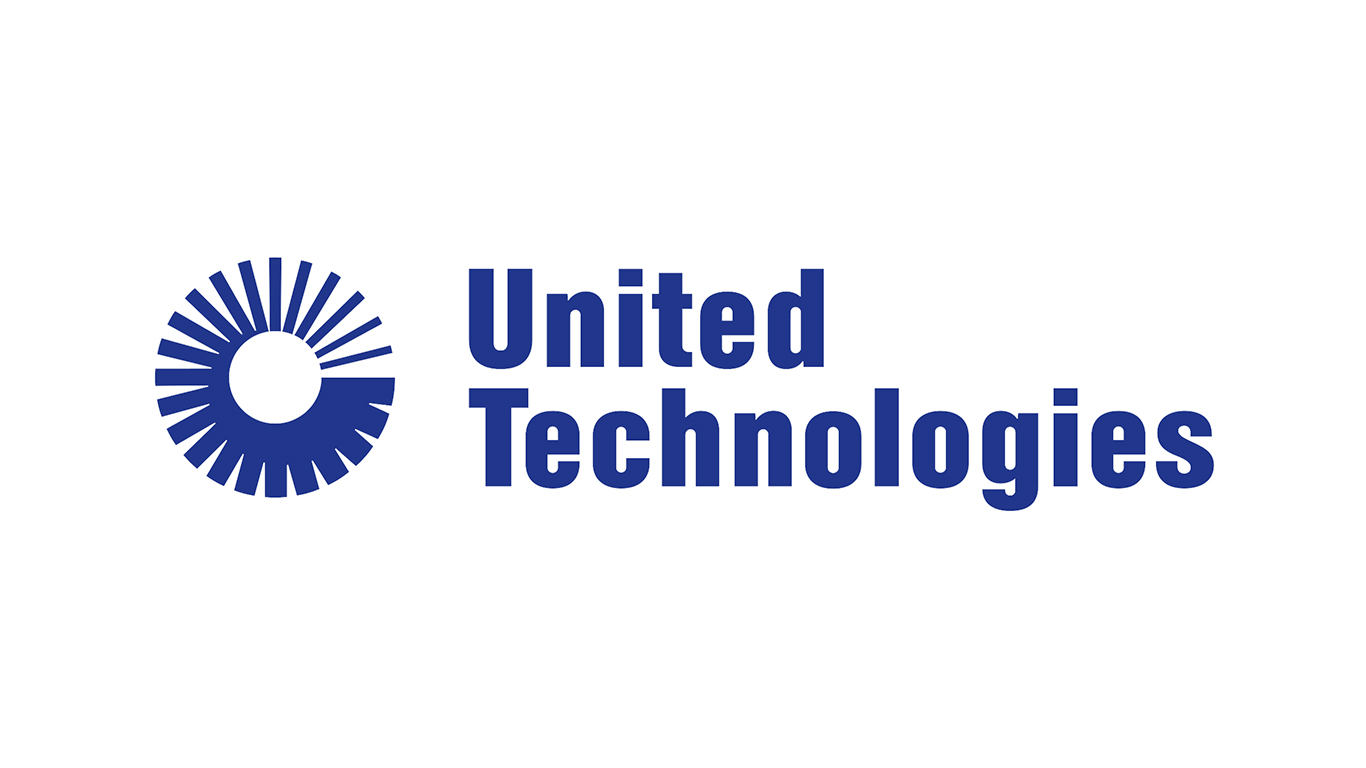
8. United Technologies Corp.
> Arms sales: $9.50 billion
> Total sales: $61.05 billion
> Profit: $4.36 billion
> Employees: 197,200
A major conglomerate with interests in a range of industries, United Technologies reported over $61 billion in sales in 2015, only 16% of which came from defense contracts. Still, the company ranks as the eighth largest defense contractor in the world. The company’s aerospace division develops and manufactures a range of military technology, from submarine stealth composites to fighter jet ejection seats. Pratt & Whitney, a United Technologies subsidiary company, manufactures engines used in military aircraft worldwide, including the F-22 Raptor and F-16 fighter jets. Pratt & Whitney accounted for $4.23 billion of the company’s total 2015 sales.
United Technologies’s commercial subsidiaries include air conditioning unit manufacturer Carrier and Otis, the world’s largest elevator installer and maintainer.
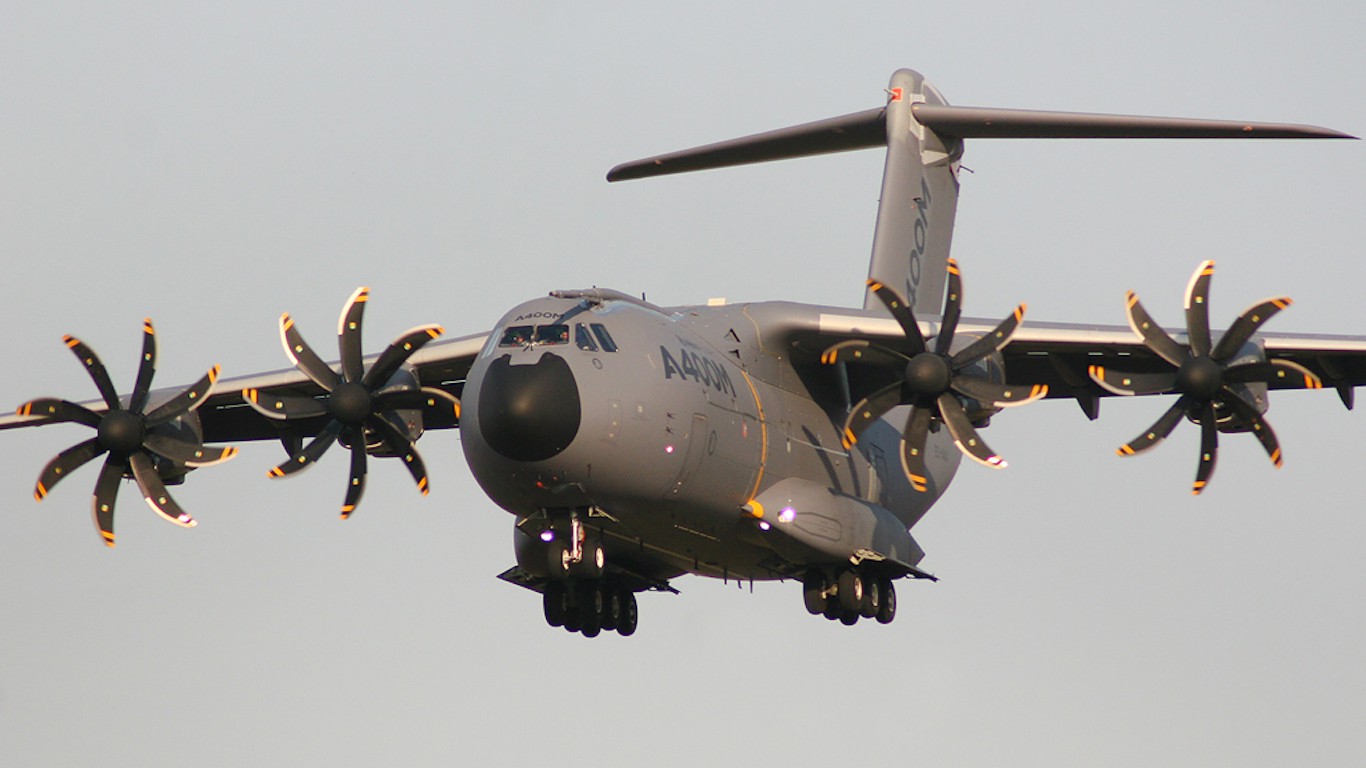
7. Airbus Group
> Arms sales: $12.86 billion
> Total sales: $71.48 billion
> Profit: $3.0 billion
> Employees: 136,570
Europe’s largest aircraft manufacturer, Airbus Group, has three divisions: commercial, defense and space, and helicopters. The company is the largest helicopter manufacturer in the world, with a 47% market share. Most of helicopters the company sells are for military purposes. Other military related products include cybersecurity technology development as well as fighter jet and unmanned drone manufacturing.
Despite ranking among the world’s largest defense contractors, less than a fifth of Airbus’s 2015 revenue were weapons related. The company also manufactures a range of non-military satellites, and it delivered 635 commercial aircraft in 2015.
[in-text-ad-2]
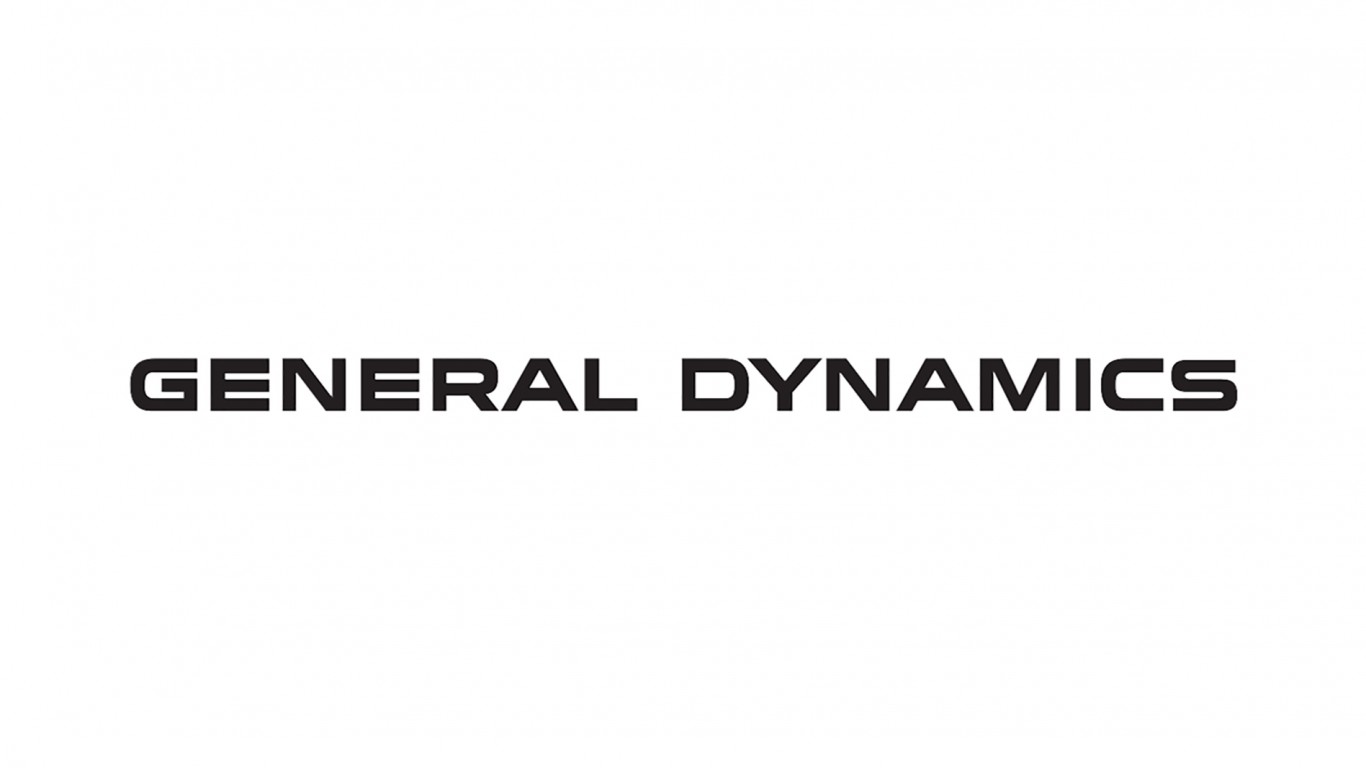
6. General Dynamics Corp.
> Arms sales: $19.24 billion
> Total sales: $31.47 billion
> Profit: $2.97 billion
> Employees: 99,900
General Dynamics manufactures and sells a range of military equipment, including ammunition, amphibious vehicles, armoured vehicles, and combat tanks. In addition, General Dynamics owns Bath Iron Works, a naval shipyard that is currently under contract to build the U.S. Navy’s new Zumwalt Class DDG-100 destroyer. The ship costs approximately $4 billion.
Well over half of General Dynamics’ revenue comes from arms sales, the vast majority of which are through contracts with the U.S. DoD. Only 13% of the company’s 2015 revenue came from contracts with foreign governments.

5. Northrop Grumman Corp.
> Arms sales: $20.06 billion
> Total sales: $23.26 billion
> Profit: $2.0 billion
> Employees: 65,000
Northrop Grumman was awarded in October 2015 the highly coveted $80 billion contract to supply the U.S. military with 100 long-range strike bombers. The deal is the biggest from the Pentagon in more than a decade. The B-2 Spirit stealth bomber is the predecessor of the newly named B-21 Raider.
The company’s 2015 arms sales, valued at $23.26 billion, included $1.8 billion for the F-35 fighter jet program, $1.1 billion for the E-2D Advanced Hawkeye early warning aircraft program, and $947 million for the Saudi Arabian Ministry of National Guard Training Support program.
[in-text-ad]

4. Raytheon
> Arms sales: $21.78 billion
> Total sales: $23.25 billion
> Profit: $2.07 billion
> Employees: 61,000
Waltham, Massachusetts-based Raytheon is known for its missiles and missile defense systems. According to the company, 13 countries use primarily Raytheon air and missile defense. This January, the U.S. Navy awarded Raytheon a $235 million contract to supply missiles for Aegis cruisers and destroyers.
Raytheon purchased cybersecurity provider Websense in 2015 for $1.9 billion. The deal was an indication of the growing threat of cyberattacks, as well as Raytheon’s effort to diversify and move into commercial markets and away from dependence on defense contracts.
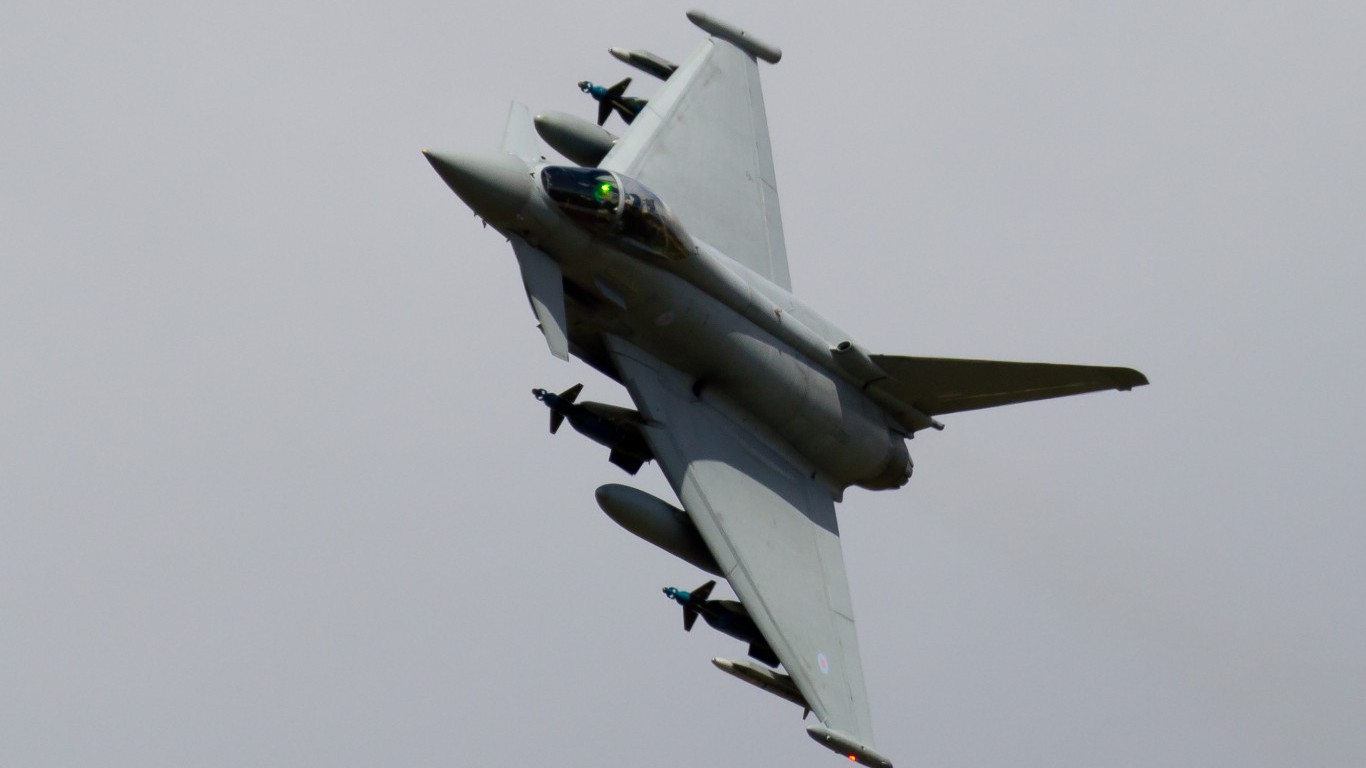
3. BAE Systems
> Arms sales: $25.51 billion
> Total sales: $27.36 billion
> Profit: $1.46 billion
> Employees: 82,500
Some 93% of BAE Systems’ $27.36 billion in 2015 revenue came from defense contracts. The company manufactures a range of military equipment, including war ships, munitions, amphibious combat vehicles, and fighter jets. BAE is the company behind the Harrier jet, capable of take-off with a short runway, as well as vertical landings. Cyber security and intelligence services also comprise a small share of the company’s business.
Though BAE Systems is headquartered in the U.K., deals with the British government comprise less than a quarter of the company’s annual revenue. BAE’s biggest clients are in the United States, with corporate and government contracts comprising over a third of the company’s total 2015 revenue. BAE’s other major markets include Australia and Saudi Arabia.

2. Boeing
> Arms sales: $27.96 billion
> Total sales: $96.11 billion
> Profit: $5.18 billion
> Employees: 161,400
Chicago-based Boeing is not nearly as dependent on federal spending as other major U.S. contractors. Less than one-third of Boeing’s 2015 revenue of $96.11 billion came from its defense, space, and security operations. The remainder was attributable to Boeing’s commercial airplane business. Of the revenue generated from defense contracts, 62% came from sales to the U.S. DoD.
Like many large U.S. manufacturing companies, including top government contractors, widely expected higher military spending under President Trump will certainly help Boeing. Favorable outcomes under Trump are not guaranteed, however. While the Air Force signed deals with Boeing last year to design parts of Air Force One, for example, Trump, citing concerns over cost, called for the deal to be cancelled.
[in-text-ad-2]

1. Lockheed Martin Corp.
> Arms sales: $36.44 billion
> Total sales: $46.13 billion
> Profit: $3.61 billion
> Employees: 126,000
Maintaining its position as the world’s largest defense contractor, Lockheed Martin’s revenue from arms sales totaled $36.44 billion in 2015. The company’s reach into military and defense technology is difficult to overstate. Lockheed and its subsidiaries manufacture many of the U.S. military’s workhorses, including the F-16 and F-22 fighter jets, the Black Hawk helicopter, and the Vector Hawk unmanned drone. The company also designs and manufactures air-to-air missiles and missile defense systems.
Like many other major defense contractors, Lockheed’s biggest customer is the U.S. government — accounting for 78% of the company’s 2015 net sales, the vast majority of which came from the DoD.
Credit card companies are at war, handing out free rewards and benefits to win the best customers. A good cash back card can be worth thousands of dollars a year in free money, not to mention other perks like travel, insurance, and access to fancy lounges. See our top picks for the best credit cards today. You won’t want to miss some of these offers.
Flywheel Publishing has partnered with CardRatings for our coverage of credit card products. Flywheel Publishing and CardRatings may receive a commission from card issuers.
Thank you for reading! Have some feedback for us?
Contact the 24/7 Wall St. editorial team.